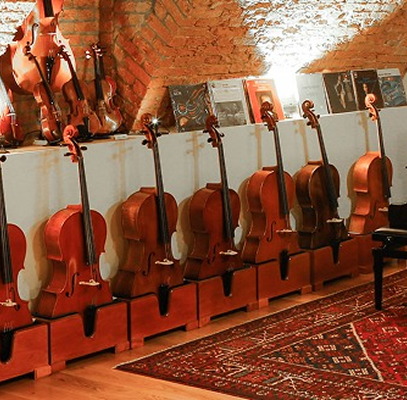The Ideal Soundpost Placement
Back to BlogThe Ideal Soundpost Placement: How Position Impacts Your Instrument’s Tone
Do you experience trouble when managing the acoustics of your stringed instrument — be it a violin, cello, or viola? It is an all too common problem among these instruments and can be solved quite easily if you take care of the soul of your instrument – And what soul is that? The Soundpost.
This handy little piece of wood can greatly affect the way your instrument vibrates and produce the ideal sound you want. Moreover, by using the ideal soundpost position placement, your instrument can provide you with added benefits like tonal clarity and balance. If you are interested in knowing more then continue reading.
Understanding the Role of the Soundpost
So, what is a soundpost? It is a small cylindrical wooden dowel — which is placed inside the violin or any other stringed instrument between the top plate and the back plate. This allows it to act as a transducer and transfer vibration from the bridge and strings to the body of your instrument. Moreover, the placement of the soundpost can also have a significant impact on tone quality, volume as well as resonance.
The Standard Positioning of the Soundpost
Usually, the soundpost is positioned slightly closer to the bridge – about 2 to 4 mm behind the treble foot of the bridge foot. While standard, this placement allows your instrument to make a balanced distribution of vibrations across your violin’s body. In fact, if the soundpost is too far away from the bridge — your violin might sound weak and lack projection. As well as, if you place it too close to the bridge — your violin tone can sound overly bright and harsh.
Effects of Moving the Soundpost
Most luthiers frequently change the position of the soundpost to fine-tune their instrument’s sound. Here are a few different positions and how they can affect your violin’s tone.
- Moving the post closer to the bridge: This can aid in increasing the brightness and volume but can sometimes lead to your violin producing a harsh or sharp tone — if it is placed too close to the bridge.
- Moving the post farther from the bridge: This position generally creates a warmer and much more mellow violin sound — but at the same time can decrease projection and clarity.
- Shifting the post toward the center of the violin: This placement can increase the warmth and resonance — making your tone more rounded.
- Moving the post outward toward the f-hole: Allows your stringed instrument to produce a more direct as well as focused sound — delivering greater clarity but with reduced warmth.
Factors Affecting Soundpost Placement
Even with the ideal soundpost position placement – there are several factors that can help to improve or worsen the sound of your violin.
- Instrument’s Construction: Each string instrument has unique characteristics — this means that things like wood density, arching as well as varnishing can greatly influence where you should place your soundpost.
- The Violin Plate: If you have a heavier string you might need to slightly adjust the sound post to get that optimal balance.
- Bridge Position and Shape: Because the bridge interacts directly with the soundpost – it is important that its alignment complements the soundpost’s placement for a well-balanced tone.
- Player’s Preference: Depending on the type of sound you are looking for i.e. a more focused and bright sound or a warmer and mellow tone. Finding the ideal soundpost position placement can easily aid in your preferences.
How to Adjust the Soundpost Safely
Adjusting your soundpost requires precision as well as experience. Moreover, luthiers use a specialized tool called a soundpost setter to reposition it safely. Here are some simple guidelines for you to follow with your luthier if you want to adjust your soundpost.
- Ensure Proper Fit: Your soundpost must be cut to fit easily between the top and back plates of your instrument without any excessive pressure.
- Move It Gradually: Even the slightest adjustment can have a major impact on the sound quality — so make sure that you move your post slowly and lightly.
- Listen for Changes: After you have made an adjustment — play your string instrument to see the tonal changes.
- Consult a Professional: Always remember, the idea is to seek a balanced sound to the taste of the musician. Its adjustment is as complex as the difference it can make to the sound. Make sure you go to a luthier every time you need to correct it! — look for experienced luthiers and service providers like Amorim Fine Violins to avoid damaging the instrument.
The Ideal Soundpost Placement
Finding the ideal soundpost position is a delicate but important factor in producing the ideal sound that you want your stringed instrument to make. So, make sure that you make adjustments accordingly or get help from professionals like Amorim Fine Violins to find that ideal soundpost placement.









